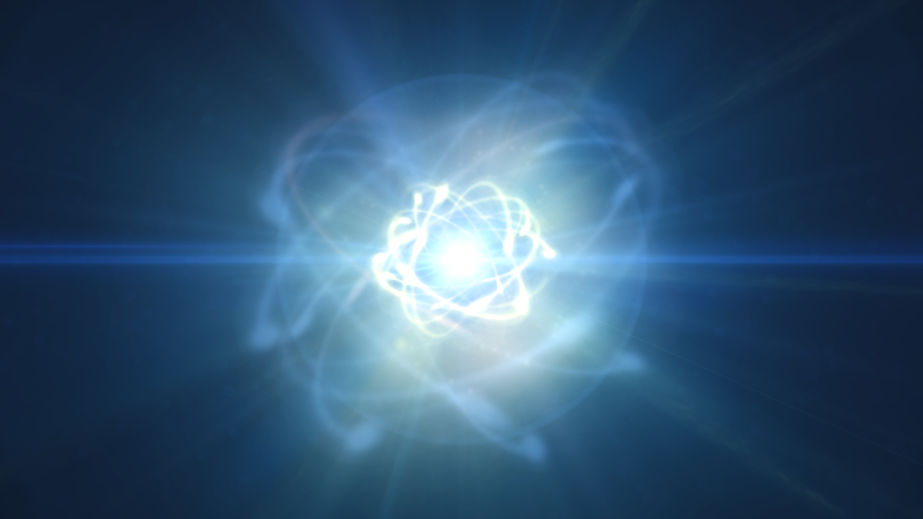The worldwide race to achieve affordable, functional nuclear fusion is rolling along, with new players popping up all over the map seeking a slice of what promises to be an unlimited energy pie that could pave the way to interplanetary travel (among many other things).
As human engineering, aided by artificial intelligence (smart machines), continues to unmask secrets hidden from humanity for all the ages, the only question that seems apropos is not whether humanity can harness fusion energy but whether human society will collapse first. Are we headed toward virtual immortality or Armageddon? Is the International Thermonuclear Experimental Reactor (ITER) facility in France the prototype for humanity’s triumph over the elements or a 21st Century Tower of Babel?
The ITER is the 35-year-old dream concocted in 1985 by Presidents Ronald Reagan and Mikhail Gorbachev and others who sensed that no country at the time had the will or the resources to solve the world’s most complicated puzzle alone. For half a century prior, following the revelation of British astrophysicist Arthur Eddington that the energy of the stars might be able to be harnessed for the good of humankind, scientists had searched in vain for the keys to unlocking this inexhaustible resource.
The ITER project thus began in 1988, and since that time 35 nations have spent a collective $24 billion to construct its 10 million parts. With final construction now under way, the hope is that the 25,000-ton reactor will be functional by 2025.
The U.S. contribution to the effort includes 12 essential hardware systems supplied by UT ITER, which is managed by the Oak Ridge National Laboratory. These systems include superconductors for the toroidal field magnet system and ORNL-developed pellet injection technology for plasma fueling and performance. US ITER project director Kathy McCarthy is ebullient about the project, noting “The start of OTER tokamak assembly is a momentous milestone for the project and makes the fusion community … excited for the future.”
Yet many remember the story of the superconducting supercollider, the massive project centered around Waxahachie, Texas, which Congress initiated in 1988 and terminated five years later after spending $2 billion on the project. Michael Riordan, writing in Physics Today, lamented that the political decision to cancel the project ended four decades plus of American leadership in high-energy physics and put Europe in the driver’s seat (a major reason perhaps why the ITER is housed in France).
After a lot of soul searching, Riordan concluded that the cancellation was merely an admission by Congress that (like the ITER) the SSC was too large and too expensive a project to have been pursued by a single nation. His view was backed by Wolfgang Panofsky, founding director of the Stanford Linear Accelerator Center, as being “a bridge too far” for U.S. high-energy physics. [Remember, this was back when a billion dollars was deemed a lot of money.]
Unlike those salad days, the rush to functional fusion is now being joined by an increasing chorus of private and single-nation adventurers – including the Chinese government. Many already see the ITER is a bureaucracy-bloated disaster whose budget has ballooned from a promised $5 billion pricetag toward the $40 billion mark by its completion.
Maddie Stone, writing in Gizmodo back in 2016, argued that ITER “seems destined to swell like a tumor until it runs out of resources and kills the host,” while a stripped-down, partially defunded effort at the Massachusetts Institute of Technology (MIT) “is showing what can be done on a budget.”
Commonwealth Fuel Systems, building on a joint project with the MIT team, has built a system powered by high-temperature superconducting (HTS) magnets that are key to a push to get a commercial fusion energy system operating by the early 2030s – years sooner than what ITER hopes to achieve. The CFS reactor intends to become the first fusion reactor to show “net energy gain” by producing more energy than it consumes as early as 2025 – adding 50 to 100 megawatts thermal to produce power in a conventional steam cycle.
Thomas Overton, writing in Powermag, reports that most of the physics questions surrounding fusion have already been answered and that at least a dozen private startup companies have begun investigating alternative approaches to fusion energy that will be simpler and less expensive than the path taken by ITER. In any case the technology from the ITER project itself should enable electricity generation from fusion and other companies (the DEMO phase, according to the ITER coalition) are seeking to capitalize on these advances.
The launch in May of the SpaceX shuttle to the International Space Station has been called “a historic milestone … [that] marks a major, long-anticipated advancement in the government-commercial sector partnership to increase access to space and bring costs down.” The historic collaboration between Elon Musk’s company and the National Aeronautics and Space Administration (NASA) has at least potentially rekindled America’s commitment to “the final frontier.”
While ITER may or may not deliver the goods itself, it could have already become the catalyst to affordable fusion energy to power the world in the future just by keeping hope (and scientific and engineering experimentation and trial-and-error) alive despite the societal collapses hounding the U.S. and world economies on top of the COVID pandemic.
Of course, if the Luddites win, we may all soon be wearing loincloths and foraging for berries.
